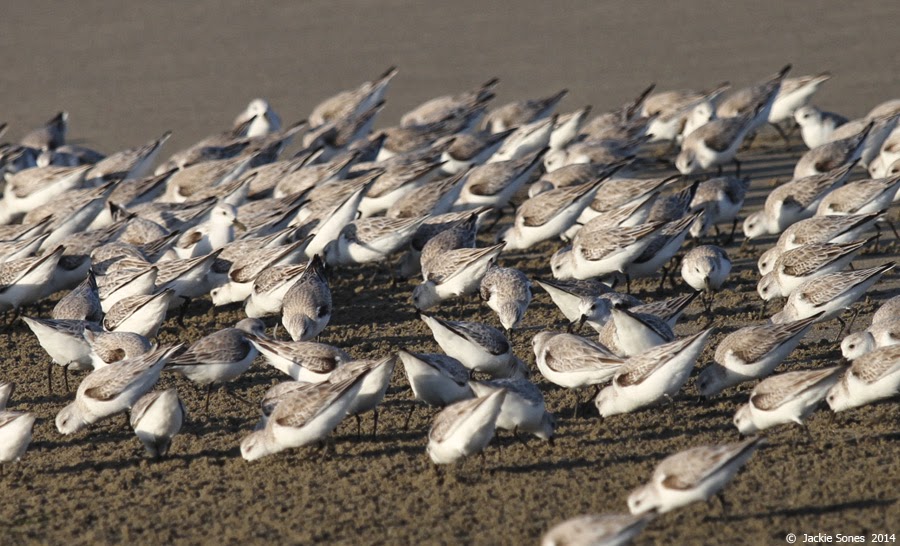So although some people call this time "March Madness" for other reasons, I've also come to know it by that name. Partly because the intense weather during this month can feel somewhat "mad." And partly because I'm "mad" about these fascinating animals that we don't get to see very often.
For example, if you look back at the blog during previous Marches and Aprils, we've documented a hyperiid amphipod living in a salp, sea angels, siphonophores, and salps.
A few days ago we came upon another species of salp. It didn't look like much at first — mostly clear and elongate, with a large orange/reddish spot at one end. This individual was ~5 cm long.
However, when we brought it in to identify it under the microscope, it was a different story! Many of its organs were visible through the transparent body wall. (Note that because the salp had washed up on the beach, there are scattered sand grains in the background.)
To make this easier, here's a diagram with some of the organs labeled:
Modified from The Biology of Pelagic Tunicates (Bone 1998)
A salp has a similar body plan to its close relative the sea squirt (an ascidian), except that the salp's incurrent and excurrent siphons are on opposite ends of the body. Water enters at one end and passes through a mucous net that is produced by an organ called the endostyle. The mucous net is suspended between the endostyle and the gill bar and traps fine particles of food. Periodically the food-laden net is rolled up and moved into the stomach to be digested. The muscle bands contract to force water through the net and the excurrent stream of water also moves the salp via jet propulsion.
And now I'll go back and identify these same organs in the picture I showed above:
Below is an even closer view of the heart and a portion of the gill bar and endostyle. The tubular heart is intriguing because it periodically reverses its direction of pumping which drives the clear blood through the circulatory system in the opposite direction!
I think this is Salpa fusiformis. Although this species is known to occur along the West Coast, this is the first time I've documented it washing ashore in the Bodega Bay area.
For more general information about salps, you can review the post from 29 March 2013.
And here's a photo of March Madness weather when we found these salps:























































